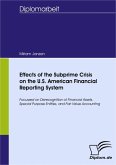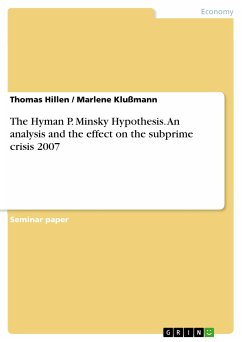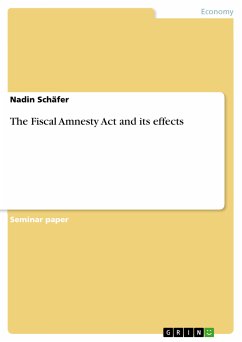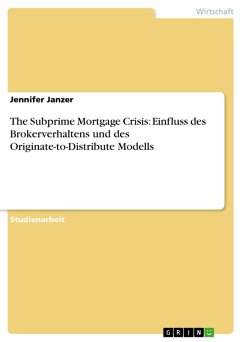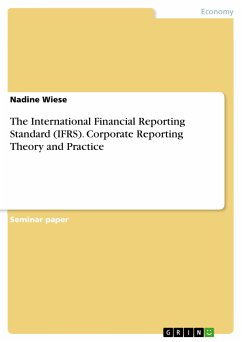Diploma Thesis from the year 2009 in the subject Business economics - Accounting and Taxes, grade: 2,0, University of Duisburg-Essen, language: English, abstract: The Subprime Crisis became noticeable first in the second half of 2006, when many subprime mortgage borrowers in the United States of America (U.S.) were no longer able to make their loan payments, and securities linked to those mortgages, that had been sold all over the world, turned out to be often worth quite less and in general substantially more risky than market partici-pants had expected. As the market tried to figure out the problems underlying the crisis, financial reporting, especially regarding derecognition of financial assets, special purpose entities and fair value measurement, became a matter of public concern. Consequently, the purpose of this work is to discuss these concerns in order to estimate whether and to what extent financial reporting might have contributed to the crisis and to present and assess the usefulness of actions taken by the U.S. Financial Reporting System in response to the crisis. In order to meet this objective, the paper first provides a brief description of how the housing boom and the subsequent crisis evolved. The following chapter describes the U.S. Financial Reporting System, by providing basic information about U.S. institutions that authoritatively deal with the elements of the system, including their aims, basics about their work and how they interact. Afterwards, the paper examines the relevant reporting concepts and disclosure requirements, provides suggestions for improvements, and assesses concerns voiced by market participants with respect to financial reporting. Subsequently, the author analyzes and judges actions taken by authoritative institutions of the U.S. Financial Reporting Sytems in response to the crisis. This thesis considered publications issued until December 10, 2008.
Dieser Download kann aus rechtlichen Gründen nur mit Rechnungsadresse in A, B, BG, CY, CZ, D, DK, EW, E, FIN, F, GR, HR, H, IRL, I, LT, L, LR, M, NL, PL, P, R, S, SLO, SK ausgeliefert werden.



